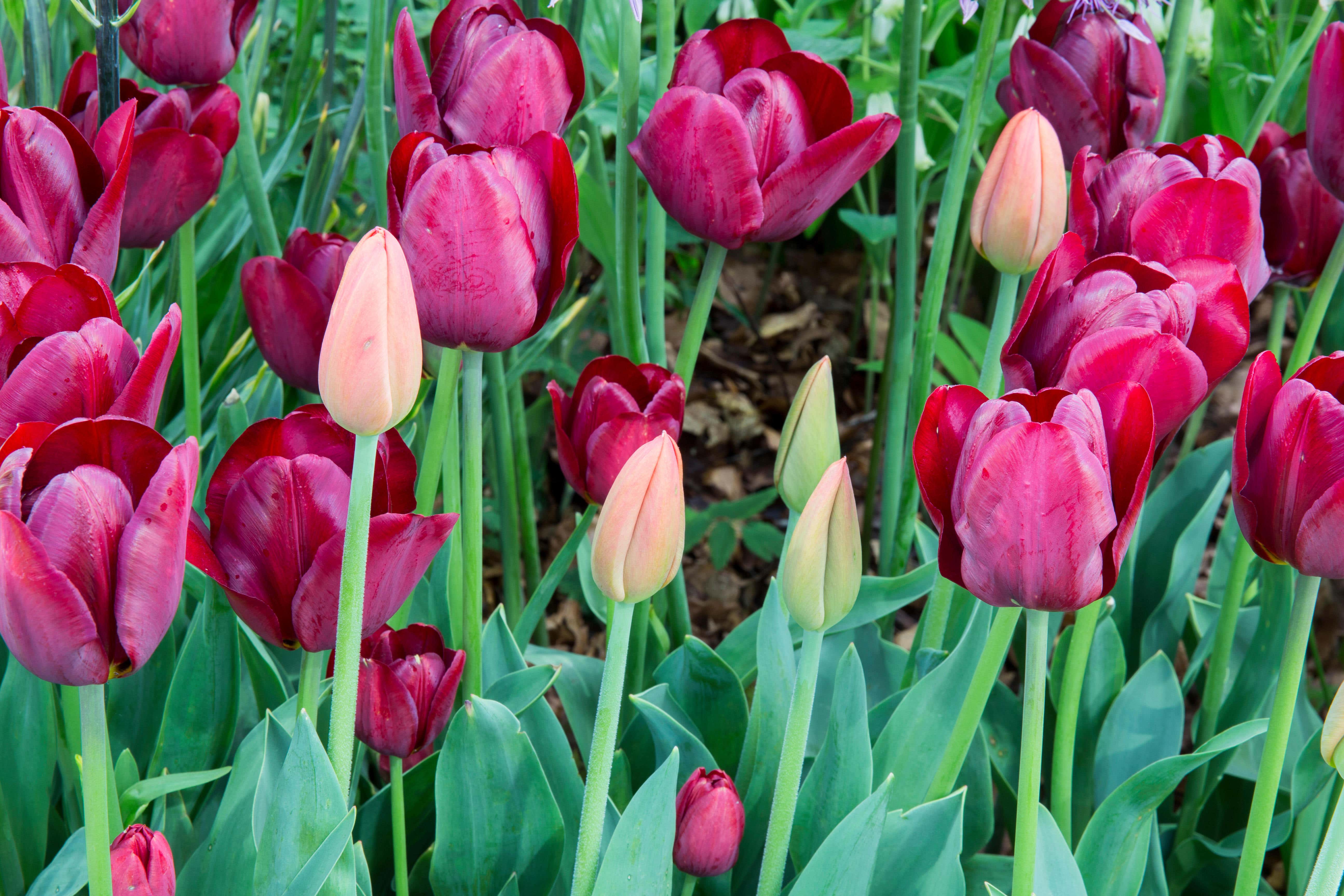Do you really need to lift tulips in summer?
Or can you leave them in the ground to come back next year?

So, the last of the tulips are now in flower, but impatient gardeners who want to focus on their summer blooms may be debating whether to lift the tulips that have finished blooming, or leave the bulbs in the ground in the hope they’ll come back next year.
So, what do you do?
Richard Wilford, horticulturist and head of garden design and collection support at the Royal Botanic Gardens, Kew, and author of The Plant Lover’s Guide To Tulips (Timber Press), says it depends on your soil and the variety of tulip.
They need free-draining soil
“At Kew we have very free-draining soil, that is quite sandy below the soil surface and drains really quickly.
“We do leave tulips in the ground and they do come back but if you’ve got heavier soil or clay soil then they probably won’t survive the summer.
“They need a dry summer, which is why a lot of people lift them when they have started to die down and then store them somewhere cool and dry ready to replant in the autumn,” he says.
Some varieties fare better than others
“There are different groups of tulips. I find the lily flower tulips a bit more resilient. They tend to come back. We’ve got Tulipa ‘Ballerina’ at Kew which has come back several years.
“You’ve also got the Fosteriana hybrids. So, Tulipa Fosteriana is the species and there’s a whole range of hybrids that are bred and still have a lot of Fosteriana in them and are much more likely to come back year after year.”
Other groups such as 6and Greigii are early-flowering and tend to be fairly resilient. He also says that the Darwin hybrids, large-flowered tulips with stems around 55cm and in a range of rich colours, may last a few years without lifting if the conditions are right.
The least likely tulips to come back are the Single Late Group, he says, which have tall stems which can reach 60-70cm and flower in late spring with an egg-shaped bud opening to a rounded cup-shaped bloom.
“They are just very highly bred and they can come back but it depends on the soil and the summer,” he says.
The weather makes a difference
Tulips like long hot dry summers in free-draining soil. If we have a wet summer and your soil is clay or heavy, bulbs are likely to rot in the ground.
If you are going to lift them…
Dig the bulbs up carefully when they are dying down. The sign that they are ready to lift is when their leaves will brown. You don’t have to leave them until the leaves have all fallen off, as that will make it harder to find, particularly if they are planted in a mixed border with other plants which are going through a growth spurt.
Carefully lift them using a hand fork, making sure you don’t pierce any bulbs, rub off the soil and lay them, with leaves attached, in a cool, dark place, maybe in a paper bag or in nets which can be hung in the shed to allow good air circulation.
At least you know they are going to have a dry summer rest, but make sure you store them in a cool, dry location.
Lifting tulips also gives you the chance to remove any rotting bulbs and replant the smaller tulip bulbs and offsets in another part of the garden where they can build up strength. Then you can lift them the following summer to add to the bigger bulb collection.
If you’re going to leave them in the ground…
Be prepared that you may lose some because of the weather, but also be aware that the tulips that do return may not be quite the same as the originals, as they may not grow as tall or have such big flowers in successive years. Some gardeners, however, welcome this naturalistic, unpredictable surprise the following spring.
Bookmark popover
Removed from bookmarks